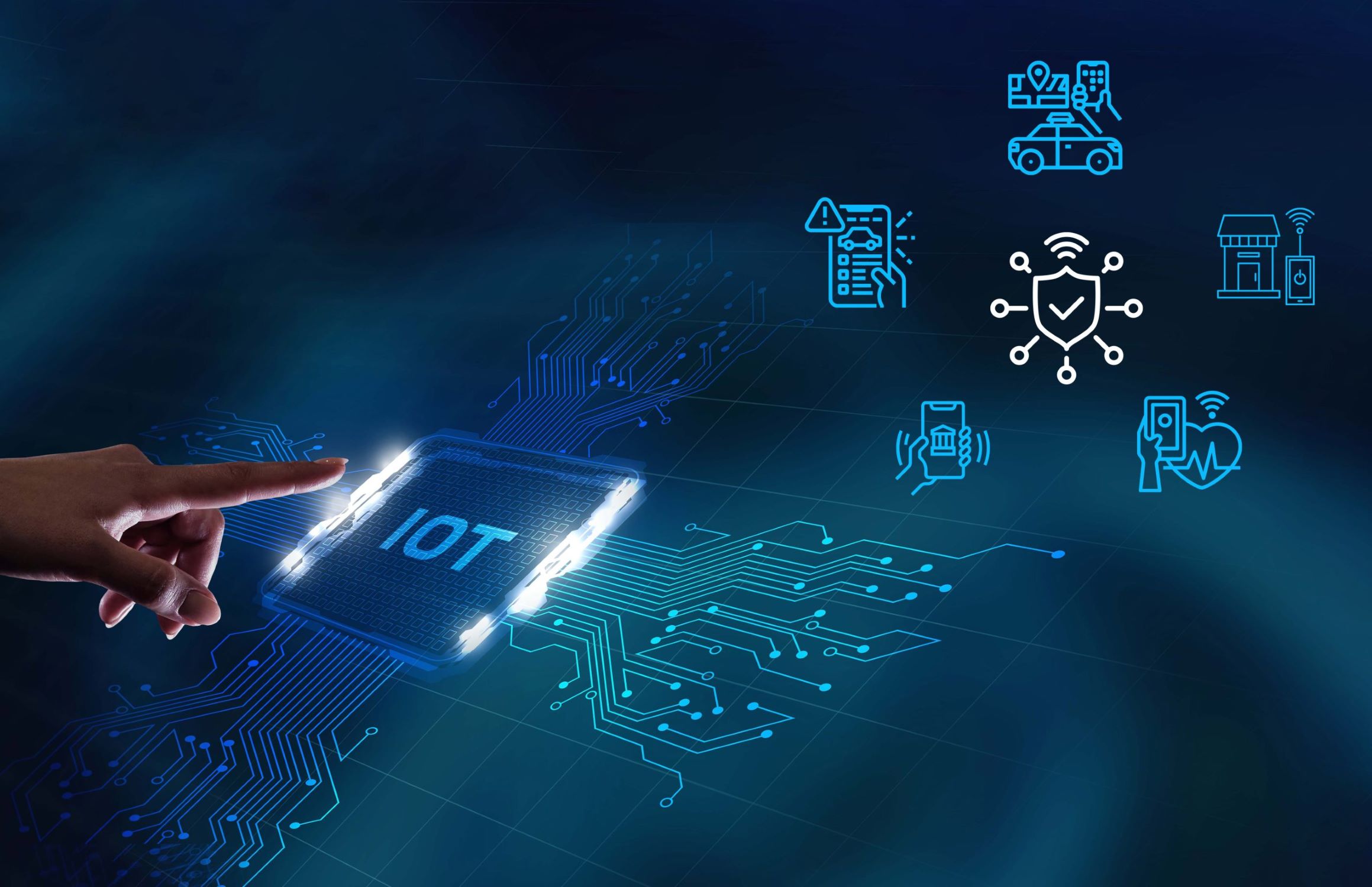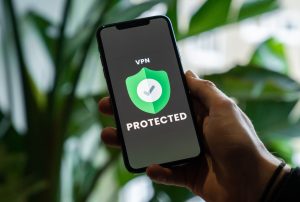Sensors and Devices
The Internet of Things (IoT) relies heavily on a wide range of sensors and devices to collect and transmit data. These sophisticated devices are equipped with various sensors such as temperature, humidity, motion, light, and pressure sensors, among others.
These sensors are embedded in everyday objects, including home appliances, wearable devices, infrastructure systems, and industrial machinery. They continuously collect data and transmit it to the IoT network in real-time, enabling organizations and individuals to make data-driven decisions and automate processes.
For example, consider a smart home equipped with IoT devices. These devices, such as smart thermostats, door sensors, and security cameras, monitor the environment and occupants’ activities. The temperature sensor in the thermostat detects the ambient temperature and adjusts the heating or cooling accordingly. The door sensors detect when a door is opened or closed, while the security cameras capture and transmit video footage for surveillance purposes.
In industrial settings, IoT devices play a crucial role in monitoring and optimizing operations. Sensors embedded in equipment and machinery collect data on performance, temperature, vibration, and other parameters. This data is then transmitted to a centralized system where it can be analyzed to identify patterns, detect anomalies, and optimize maintenance schedules.
Moreover, IoT devices are not limited to physical sensors; they also include actuators that enable them to interact with the physical world. For instance, smart lighting systems can adjust brightness levels based on ambient light or occupant preferences. Smart irrigation systems can automatically water plants based on soil moisture levels measured by sensors.
Sensors and devices are the backbone of the IoT ecosystem, providing the necessary data to power intelligent systems and enable automation. As technology continues to advance, we can expect an increasing number of devices to be connected to the IoT, further expanding its capabilities.
User-generated Data
In addition to the data collected by sensors and devices, the Internet of Things (IoT) also relies on user-generated data. This refers to the information generated by individuals through their interactions with IoT devices and applications.
With the increasing integration of IoT into everyday life, individuals generate substantial amounts of data through various activities. For example, wearable devices track and record fitness data such as heart rate, sleep patterns, and steps taken. Smart home applications collect data on user preferences, usage patterns, and energy consumption. Smart cars capture driving habits, fuel efficiency, and navigation preferences.
One of the key benefits of user-generated data in the IoT is the ability to personalize experiences and services. By analyzing the data collected from individuals, organizations can gain insights into their preferences, habits, and behavior patterns. These insights can be used to tailor recommendations, improve product design, and enhance user experiences.
Moreover, user-generated data can play a crucial role in healthcare and well-being. IoT devices such as fitness trackers and health monitors collect data on individuals’ physical activities, sleep patterns, and vital signs. This data can be shared with healthcare professionals, enabling remote monitoring, preventive care, and early detection of health issues.
Data privacy and security are important considerations when it comes to user-generated data in the IoT. As individuals generate and share more personal data, organizations must ensure that strict measures are in place to protect privacy and prevent unauthorized access. This includes implementing robust encryption protocols, secure data storage, and giving individuals control over how their data is used.
Overall, user-generated data in the IoT empowers individuals to have personalized experiences, improves products and services, and has the potential to revolutionize healthcare. As the IoT continues to evolve, it is essential for individuals and organizations to strike a balance between harnessing the value of user-generated data and maintaining privacy and security.
Environmental Data
One of the vital types of data that the Internet of Things (IoT) utilizes is environmental data. This refers to the information collected about the physical environment, including factors such as air quality, pollution levels, weather conditions, and natural resource monitoring.
With the help of IoT devices and sensors, environmental data is gathered in real-time from various locations and sources. For instance, air quality sensors can be deployed in cities to monitor pollutants such as CO2, PM2.5, and ozone levels. These sensors provide valuable insights into the quality of the air we breathe and help identify areas that require attention to improve environmental health.
Weather monitoring is another essential application of environmental data in the IoT. Weather stations equipped with sensors collect data on temperature, humidity, precipitation, wind speed, and barometric pressure. This information is crucial for accurate weather forecasting, agricultural planning, and disaster management.
Furthermore, IoT technology is also being utilized to monitor and manage natural resources such as water and soil. Soil moisture sensors can provide data on moisture levels, enabling efficient irrigation and optimizing water usage in agriculture. Water quality sensors can monitor factors like pH levels and contaminants in bodies of water, helping to safeguard aquatic ecosystems.
The collection and analysis of environmental data through the IoT have numerous benefits. It aids in identifying trends and patterns, enabling organizations and policymakers to make informed decisions regarding environmental conservation, urban planning, and resource management. It also allows for early detection of environmental hazards and proactive measures to mitigate their impact.
Environmental data plays a crucial role in sustainability efforts and the progress towards a greener future. By leveraging IoT technology to gather and analyze this data, we can work towards creating more environmentally-friendly and sustainable solutions in various sectors, including energy, transportation, and agriculture.
However, it is important to ensure the accuracy and reliability of the environmental data collected through the IoT. Regular maintenance, calibration, and quality control measures should be implemented to guarantee the integrity of the collected information.
Overall, environmental data in the IoT provides valuable insights into our surroundings, enabling us to make informed decisions and take necessary actions to preserve and protect our environment for future generations.
Location Data
Location data is a fundamental component of the Internet of Things (IoT) ecosystem. It refers to the information that is collected and analyzed based on the geographical position of connected devices and sensors.
GPS (Global Positioning System) technology is commonly used to track and gather location data. IoT devices equipped with GPS sensors can determine their precise location coordinates, enabling the collection of real-time location data.
Location data is utilized in a wide range of applications across various industries. In transportation, it plays a critical role in optimizing logistics, route planning, and fleet management. GPS-enabled sensors on vehicles provide accurate information about their location, speed, and movement, helping businesses improve efficiency, reduce fuel consumption, and enhance customer satisfaction.
Additionally, location data is used in the retail industry to enhance customer experience and drive targeted marketing campaigns. With the use of beacons and geofencing technology, retailers can send personalized offers and promotions to customers when they enter specific locations or proximity to their stores. This enables businesses to deliver targeted advertisements based on the customer’s location and preferences.
Geolocation data is also significant in the field of urban planning and smart city initiatives. By monitoring and analyzing the movement patterns and behaviors of residents, city planners can identify traffic congestion areas, optimize public transportation routes, and enhance urban infrastructure based on actual usage patterns.
Furthermore, location data has numerous applications in the field of personal safety and emergency response. In emergency situations, connected devices equipped with GPS sensors can transmit location information to emergency services, enabling them to respond quickly and accurately. This can be particularly crucial in cases of accidents, natural disasters, or personal safety concerns.
While location data offers valuable insights and benefits, there are privacy considerations that need to be addressed. As location data is highly sensitive and personal, it is crucial to implement robust security measures to protect individuals’ privacy and ensure that data is used responsibly and with consent.
Overall, the use of location data in the IoT opens up new possibilities for efficient resource management, personalized experiences, and improved safety. By harnessing the power of location data, organizations can make data-driven decisions and deliver innovative solutions that enhance the quality of life for individuals and communities.
Machine-generated Data
Machine-generated data is a crucial component of the Internet of Things (IoT) ecosystem. It refers to the information produced and transmitted by machines, systems, and devices without direct human intervention. This data is generated in real-time and provides valuable insights for businesses, industries, and organizations.
In the IoT, machines are equipped with various sensors and connected to networks, enabling them to collect and transmit data autonomously. This data can include performance metrics, operational status, error logs, diagnostic information, and more.
One of the key benefits of machine-generated data in the IoT is predictive maintenance. By continuously monitoring the performance and condition of machines, organizations can detect anomalies and potential failures in advance. This allows for proactive maintenance, reducing downtime, improving efficiency, and preventing costly breakdowns.
Machine-generated data is also crucial in optimizing manufacturing processes and improving product quality. Sensors integrated into production lines and machinery can collect data on parameters such as pressure, temperature, speed, and vibration. Analyzing this data allows organizations to identify areas for improvement, streamline operations, and enhance product quality.
Furthermore, machine-generated data plays a significant role in the field of energy management and conservation. Smart grids, for example, collect data from meters, sensors, and power generation systems to monitor energy consumption patterns, identify inefficiencies, and optimize distribution. This data enables better resource allocation and provides insights for implementing energy-saving strategies.
Machine-generated data is also utilized in the field of predictive analytics. By analyzing large volumes of data generated by machines, algorithms can identify patterns, trends, and correlations that can help organizations make data-driven decisions and improve their operational efficiency.
However, the vast amount of machine-generated data poses challenges in terms of storage, processing, and analysis. Organizations need robust infrastructure and advanced analytics capabilities to handle and make sense of this data effectively.
Social Media Data
Social media has become an integral part of our lives, and the data generated through these platforms is a valuable resource for the Internet of Things (IoT). Social media data refers to the information collected from social media platforms, including user interactions, posts, comments, likes, shares, and more.
With the increasing popularity of social media platforms, the amount of data generated is enormous. This data provides insights into user behavior, preferences, interests, and trends. Businesses can leverage social media data to gain a deeper understanding of their target audience, improve customer engagement, and tailor their marketing strategies accordingly.
The IoT can merge social media data with other data sources to provide a more comprehensive understanding of individuals’ lifestyles, preferences, and habits. For example, by analyzing social media posts and interactions, companies can enhance their understanding of customer sentiment and feedback, enabling them to make data-driven decisions and improve their products and services.
Moreover, social media data can be used in enhancing public safety and emergency response. During crises or natural disasters, social media platforms serve as valuable sources of real-time information. Data from these platforms can be analyzed to identify patterns, predict potential risks, and support emergency response efforts, such as mobilizing resources and providing assistance to affected areas.
Social media data plays a significant role in influencer marketing as well. Influencer marketing has gained popularity in recent years, and social media platforms are the primary channels for influencers to connect with their audience. By analyzing social media data, businesses can identify relevant influencers, measure their impact, and strategize their influencer marketing campaigns accordingly.
Data privacy is a crucial consideration when working with social media data in the IoT. Organizations must ensure that they comply with privacy regulations and respect users’ consent when collecting and analyzing social media data. Transparency and accountability are essential when handling personal information gathered from social media platforms.
While social media data offers immense opportunities, it is important to ensure responsible and ethical use. Organizations should consider the ethical implications of using social media data and avoid any discriminatory practices or misuse of personal information.
Health and Fitness Data
The Internet of Things (IoT) has revolutionized the way we monitor and manage our health and fitness. Through connected devices and sensors, individuals can track various health metrics and collect valuable data related to their well-being.
Health and fitness wearables, such as smartwatches and fitness trackers, have gained popularity in recent years. These devices are equipped with sensors that monitor and collect data on metrics such as heart rate, sleep patterns, steps taken, calories burned, and more. This data can be seamlessly synced with smartphone apps or cloud-based platforms, enabling individuals to gain insights into their physical activity, sleep quality, and overall health.
With access to health and fitness data, individuals can set goals, track progress, and make informed decisions regarding their lifestyle choices. They can identify patterns, monitor trends, and make adjustments to improve their well-being. This data-driven approach promotes a healthier lifestyle and encourages individuals to take ownership of their health.
Healthcare providers and professionals also benefit from health and fitness data in the IoT. By leveraging this data, they can gain a better understanding of patients’ conditions and monitor their progress remotely. This enables more personalized care, early detection of health issues, and the ability to intervene promptly when necessary.
Furthermore, health and fitness data can be used for research purposes, contributing to the advancement of medical knowledge and the development of new treatments. Aggregated and anonymized data from wearable devices and health applications can provide insights into population health trends, disease patterns, and the effectiveness of interventions.
However, it is essential to ensure data privacy and security when dealing with health and fitness data. As this information is sensitive and personal, it is crucial to adhere to strict security protocols, encryption standards, and data protection regulations. Individuals must have control over how their data is collected, stored, and shared, ensuring their privacy is respected.
The use of health and fitness data in the IoT has the potential to revolutionize healthcare and empower individuals to take control of their well-being. By leveraging the insights gained from this data, individuals can make informed decisions, healthcare professionals can provide more personalized care, and organizations can drive advancements in medical research and treatment.
Transportation Data
The Internet of Things (IoT) has transformed the way we interact with transportation systems and has opened up a wealth of opportunities for gathering and utilizing transportation data. Connected vehicles, smart infrastructure, and advanced sensors play a crucial role in collecting and analyzing transportation data to optimize efficiency and improve the overall transportation experience.
One of the key applications of transportation data in the IoT is traffic management. By collecting real-time data on traffic flow, congestion, and road conditions, transportation authorities can make informed decisions to improve traffic management strategies. This includes adjusting traffic signals, optimizing routes, and implementing dynamic traffic management systems to reduce congestion and enhance commuting efficiency.
Moreover, transportation data from IoT sensors and devices can be analyzed to identify hazardous areas, accident-prone spots, and other safety concerns. By detecting and addressing these issues, transportation authorities can work towards creating safer road networks and reducing the number of accidents.
The IoT enables the integration of various modes of transportation, including cars, buses, trains, and bicycles, to create a more seamless and efficient transportation ecosystem. Data from different modes of transportation can be collected and analyzed to optimize multimodal connections, improve public transportation services, and enhance the overall travel experience.
Transportation data in the IoT also contributes to sustainability and environmental concerns. By monitoring vehicle emissions, fuel consumption, and transportation patterns, organizations and policymakers can identify areas for improvement and implement measures to reduce carbon emissions and promote eco-friendly transportation options.
Additionally, transportation data is valuable for logistics and supply chain management. By tracking shipments, monitoring delivery routes, and analyzing data on transportation and storage conditions, organizations can optimize their supply chain operations, reduce costs, and improve customer satisfaction.
However, the utilization of transportation data comes with data privacy and security considerations. Personal information collected from IoT devices, such as GPS data and travel patterns, must be handled with utmost care to protect individuals’ privacy. Robust security measures should be in place to prevent unauthorized access and ensure the secure transmission and storage of transportation data.
The use of transportation data in the IoT offers immense potential in improving traffic management, enhancing safety, promoting sustainability, and optimizing supply chain operations. By leveraging the power of technology and data-driven insights, transportation systems can become smarter, more efficient, and more responsive to the needs of users.
Energy and Utility Data
The Internet of Things (IoT) has revolutionized the way we collect and utilize energy and utility data, enabling more efficient and sustainable resource management. IoT devices and sensors play a crucial role in gathering real-time data on energy consumption, utility usage, and infrastructure performance.
One of the key applications of energy and utility data in the IoT is energy monitoring and management. Smart meters connected to the IoT network provide real-time information on energy usage, allowing individuals and organizations to monitor and optimize their consumption patterns. By identifying areas of high energy usage and implementing energy-saving measures, users can reduce their carbon footprint and lower their energy bills.
Furthermore, IoT technology can be used to enable demand response programs, where energy consumption is adjusted based on real-time supply and demand data. By incentivizing users to shift their energy usage during peak or off-peak periods, energy grids can reduce strain during high demand periods and ensure a more efficient distribution of resources.
Utilities can leverage energy and utility data to detect anomalies, improve infrastructure performance, and enhance maintenance operations. IoT sensors can monitor the health and performance of equipment, such as transformers, generators, and substations, providing real-time data on temperature, voltage, and other vital parameters. This data enables proactive maintenance and avoids costly breakdowns.
The utilization of energy and utility data in the IoT also supports sustainability efforts. By analyzing energy consumption patterns and infrastructure efficiency, organizations and governments can identify opportunities for energy conservation and implement renewable energy initiatives. This promotes a cleaner and more sustainable energy landscape.
Moreover, water utility companies can gather and analyze data on water usage, leakage, and quality through IoT sensors. This data allows for more effective water management strategies, early detection of leaks, and optimization of water distribution networks.
However, the integration of IoT technology into the energy and utility sector brings challenges related to data privacy and security. As data is collected from numerous devices, it is crucial to implement robust security measures to protect valuable information and prevent unauthorized access. Additionally, data sharing and compliance with relevant privacy regulations require careful consideration.
Overall, energy and utility data in the IoT offers tremendous potential for optimizing resource usage, promoting sustainability, and improving infrastructure performance. By leveraging the insights gained from this data, individuals, organizations, and utility providers can make informed decisions that contribute to a more efficient and sustainable future.
Industrial Data
The Internet of Things (IoT) has transformed the industrial sector by enabling the collection and analysis of vast amounts of industrial data. Industrial data refers to the information generated within manufacturing and industrial processes, allowing businesses to optimize operations, improve efficiency, and drive innovation.
IoT devices and sensors integrated into industrial equipment provide real-time data on various parameters such as temperature, pressure, humidity, vibration, and performance metrics. This data enables proactive maintenance, process optimization, and predictive analytics to minimize downtime, reduce costs, and enhance overall productivity.
One of the key applications of industrial data in the IoT is predictive maintenance. By continuously monitoring machines and equipment, businesses can detect anomalies and potential failures in advance. This allows for scheduled maintenance, efficient resource allocation, and the prevention of costly breakdowns that can significantly impact production.
Moreover, industrial data in the IoT facilitates the concept of smart factories or Industry 4.0. By integrating sensors, machines, and systems, businesses can create interconnected production lines that leverage real-time data to improve efficiency and automate processes. This includes tasks such as inventory management, quality control, and supply chain optimization.
Data collected from industrial processes can be analyzed to identify inefficiencies, bottlenecks, and areas for improvement. By gaining insights from data analytics, businesses can optimize production cycles, reduce waste, and enhance overall operational efficiency.
Furthermore, industrial data can be utilized to enhance worker safety. IoT devices, such as wearable sensors and smart helmets, can monitor worker activities and environmental conditions. This data can help identify potential safety risks and enable timely interventions to prevent accidents and injuries.
Data privacy and security are critical considerations when dealing with industrial data in the IoT. Given the sensitive nature of industrial processes, organizations must ensure that data is collected, stored, and transmitted in a secure manner. Robust security protocols and protocols to protect against cyber threats are essential to maintain the integrity and confidentiality of industrial data.
Overall, the utilization of industrial data in the IoT has the potential to revolutionize the manufacturing sector. By leveraging real-time insights, businesses can optimize production processes, reduce costs, enhance worker safety, and drive innovation. Effectively harnessing industrial data can lead to the efficient and sustainable development of industries.




